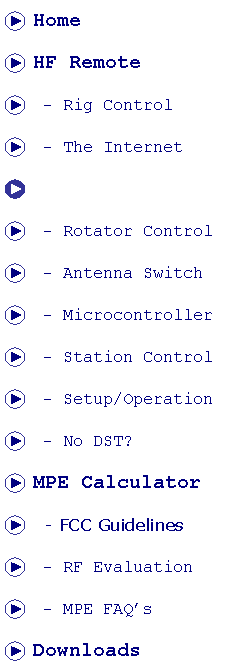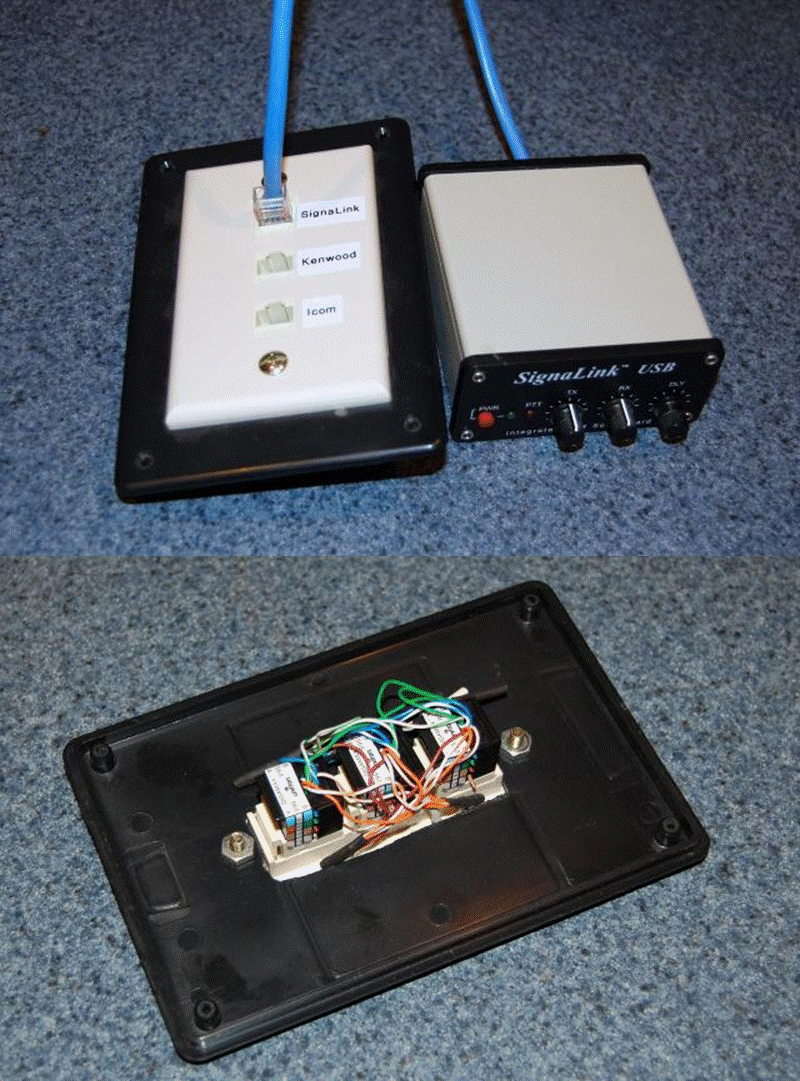

|
W0JEC’s Projects |

|
Contents |
|
Audio Interface Between Your Remote Computer and Home Station
When operating HF remote, you will need a microphone and speakers or headphones connected to your remote computer. Modern laptops have built in microphones and speakers or you can use one of the inexpensive computer headsets but to achieve better audio quality I have chosen the Heil Pro Micro (single or dual) headset. This headset has 1/8 inch plugs for both mic and speakers that fit my laptop without adaptors. Other fine headsets are also available.
You will require an audio interface between your home computer and your radio. There are several audio interfaces you can purchase for this purpose or you can build your own. Click HERE for a good discussion of both CAT and audio interfacing for various ham radios. Although an audio interface using your computer’s internal soundcard will work fine, I strongly recommend using an interface that has an external soundcard. Your computer’s internal soundcard is shared by other software on your computer which makes it difficult to keep properly configured for HF remote use. I have chosen the Tigertronics SignaLink USB for my interface because is uses an external soundcard. It gives high quality audio and I was able to connect it to both of my radios simultaneously (more on that later). The SignaLink also provides VOX keying of my radios so I don’t have to provide a separate PTT arrangement.
Next, you must make an audio connection between your remote computer and home computer and radio. There are several Internet services available for this. I use Skype, a free software service used primarily for internet phone calls and video conferencing. Download the free version and install it on both of your computers. You can configure your Skype installations to start automatically whenever your computer restarts and to be invisible to others so you won’t get unsolicited calls from strangers. Once you have Skype installed on both computers, place a call from your remote computer to the home computer and ‘accept’ the call on Skype running on the home computer.
The Skype on your home computer can be configured to automatically accept calls only from your remote computer; a really useful feature since you must keep Skype running on your home computer at all times so it can accept calls from your remote computer whenever you operate HF remote. Configure your home Skype’s audio settings for the soundcard (internal or external) that you use for audio interfacing with your radio. In my case since I use SignaLink USB, I configure my home Skype audio settings to use ‘USB CODEC’ for both my microphone and speakers. This directs all Skype audio between my remote computer and my radio through my SignaLink USB. If you use a headset for your remote computer, be sure to configure your Skype audio settings to use only the headset microphone and speakers; turn off your internal mic to keep stray room noises out of your audio.
You may find that an audio interface using VOX to key your radio can be a little sensitive. Background noise through an ‘open’ mic may key your radio unexpectedly. Using Skype, you can mute your microphone when not transmitting or you can build a simple momentary on/off switch for your microphone connection to the computer which will control your mic audio.
By the way, an audio interface between your computer and radio is not only useful for SSB HF remote operations, it also enables all of the digital modes such as CW, RTTY, PSK, etc. In fact, the digital modes can be operated remotely using Ham Radio Deluxe’s Digital Master 780 found under the Tools drop-down menu option.
Audio Interface For Two Radios
I have two radios and I direct my SignaLink USB audio to both so I can switch between them if I need. The connection between SignaLink USB and the radio uses Cat5 (Ethernet) cable. To connect to two radios, I connected the Cat 5 cable from the SignaLink USB into a RJ45 wall outlet plate for three connectors (available from the hardware store), and from that plate I connect Cat5 to each radio. Tigertronics will provide the wiring scheme for different radios that can be used when wiring the RG45 outlet connectors. Thus, my Skype audio is fed between the SignaLink USB and each of my radios simultaneously and the radio that is switched on uses the SignaLink USB to connect to the home computer. |
